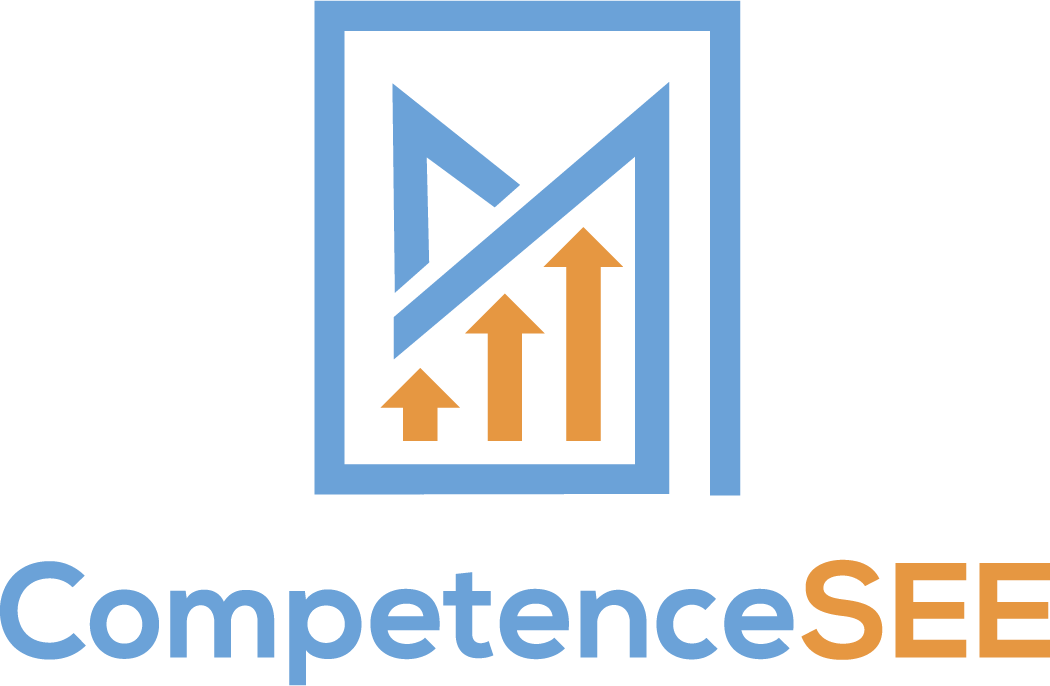FAQs
CompetenceSee was developed by educators for educators who believe in moving beyond traditional age-based metrics to truly personalized learning. Our team combines decades of experience in both education and technology to create a system that addresses real problems faced by innovative schools and learning environments.
Why Choose an Alternative to Traditional Grading?
Traditional grade-based systems often fail to capture the full picture of student capabilities. CompetenceSee provides an alternative to traditional grading that shows exactly what students know and can do, rather than just averaging performance across arbitrary time periods. While our system can generate conventional grades for high school transcripts when needed, our innovative tracking and portfolio system reveals much more about a student’s skills and knowledge than a single letter grade ever could. Our educational mastery platform gives educators, students, and parents a more accurate and actionable view of learning progress, creating a comprehensive record of achievement that truly represents each learner’s journey.
What is mastery learning?
Mastery learning is an educational approach that focuses on ensuring students achieve a high level of understanding or proficiency in a topic before moving on to the next concept. Students can master material if they are given enough time, support, and the right teaching strategies. The following encompasses the primary principles of mastery learning:
- Clear Learning Objectives:
- Lessons are structured around specific, measurable objectives.
- Students know what they are expected to learn.
- Pacing:
- Students progress at their own pace rather than following a fixed schedule.
- This allows slower learners to take the time they need while advanced learners can move ahead.
- Formative Assessments:
- Frequent, low-stakes assessments (e.g., quizzes) are used to monitor progress.
- These help identify gaps in understanding before moving forward.
- Corrective Feedback:
- Students who do not achieve mastery receive additional instruction, practice, or alternative learning strategies tailored to their needs.
- This ensures they have another opportunity to learn and improve.
- Enrichment Opportunities:
- Students who achieve mastery quickly are given enrichment activities to deepen their understanding or explore related topics.
Mastery learning is often associated with educational psychologist Benjamin Bloom, who developed the approach in the 1960s. It can be applied in traditional classrooms, online learning environments, and through adaptive learning technologies.
Why do schools or districts create a portrait of a graduate?
Creating a Portrait of a Graduate serves as a strategic and visionary step for schools, districts, or educational programs to clearly define the skills, competencies, and character traits students need to succeed in an ever-changing world. Here are reasons to create this for your school:
- Define Success Beyond Academics
- A Portrait of a Graduate provides a holistic view of what success looks like. It emphasizes skills like critical thinking, creativity, communication, collaboration, and adaptability alongside academic knowledge.
- This can help prepare students for the realities of life, including college, careers, and civic engagement.
- Future-Proof Education
- The world is rapidly changing due to advancements in technology, globalization, and evolving job markets. The portrait helps identify future-ready skills that students will need to navigate complexity and uncertainty.
- These skills can align with local, regional economic development goals as well.
- It prepares students to thrive in careers that may not yet exist by focusing on adaptable, transferable skills.
- Align Goals Across Stakeholders
- By engaging educators, parents, students, community members, and industry leaders in the process, it fosters a shared vision for student success.
- This alignment allows all to work toward common outcomes, creating coherence in teaching, learning, and assessment practices.
- Promote Equity and Inclusion
- All students, regardless of background, have access to opportunities that develop critical competencies with a portrait of a graduate.
- It emphasizes the importance of meeting diverse learners’ needs and creating a supportive environment where every student can succeed.
- Guide Curriculum, Instruction, and Assessment
- It acts as a roadmap for curriculum development, instructional strategies, and assessment practices.
- Educators can design learning experiences that intentionally build the skills and qualities outlined in the portrait.
- Empower Students for Lifelong Learning
- Focusing on skills like problem-solving, resilience, and ethical decision-making, the portrait helps students become lifelong learners who can adapt to personal and professional challenges.
- It emphasizes the development of self-awareness, emotional intelligence, and the ability to contribute positively to society.
- Strengthen Community Connections
- A Portrait of a Graduate helps schools form meaningful partnerships with businesses, higher education institutions, and community organizations.
- These partnerships ensure students gain real-world experiences that align with the skills and traits emphasized in the portrait.
- Measure What Matters Most
- Traditional metrics like standardized test scores often fail to capture a student’s full potential.
- A portrait provides a broader framework for success, encouraging schools to evaluate outcomes like creativity, leadership, and teamwork.
- Inspire a Sense of Purpose
- It creates a compelling narrative about the purpose of education, moving beyond routine academic tasks to a vision that excites students, educators, and the community.
- Students see their education as preparation for meaningful contributions to the world.
A Portrait of a Graduate is more than a document—it’s a catalyst for transforming education to meet the demands of the 21st century while empowering every student to achieve their fullest potential.
